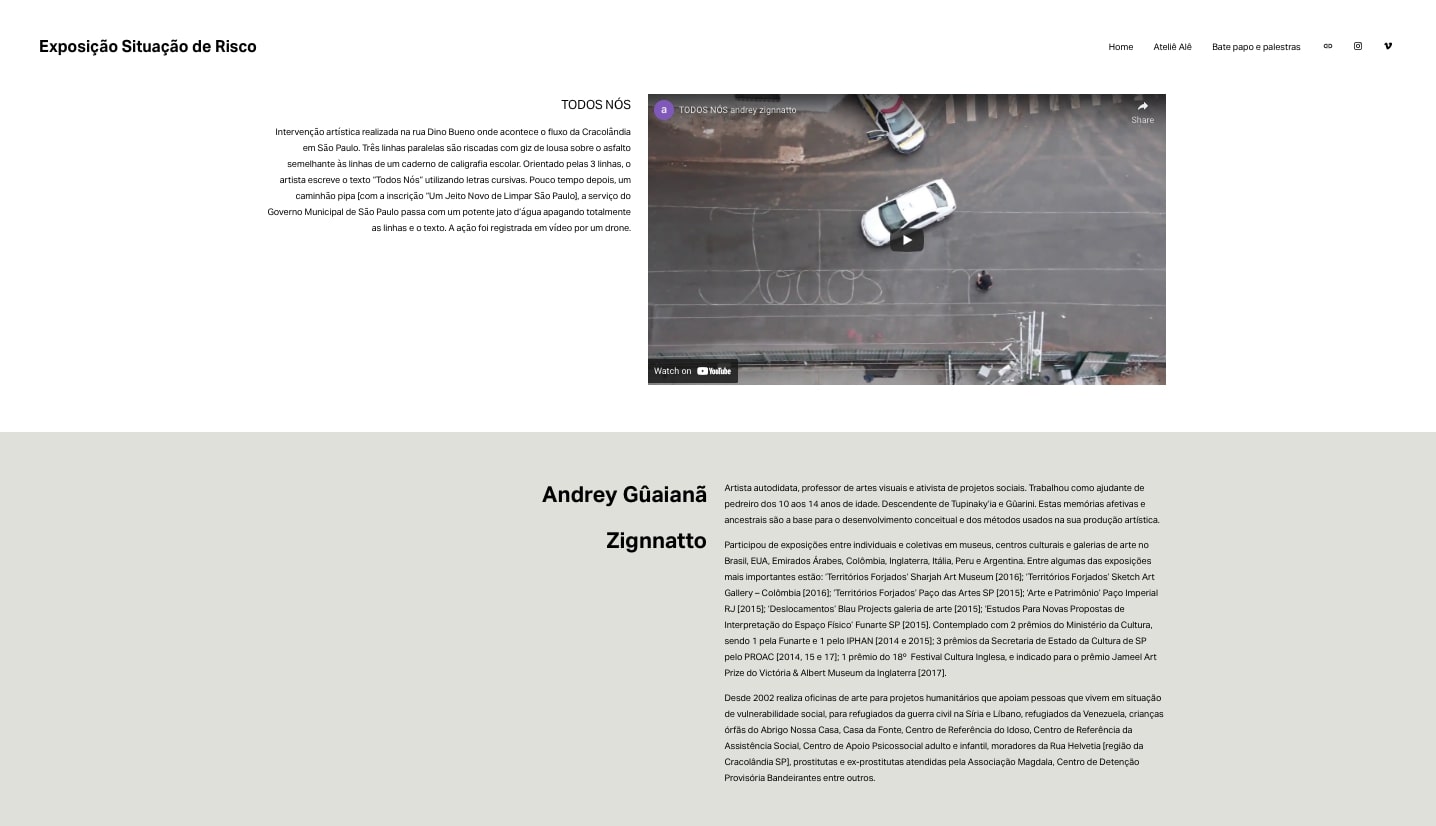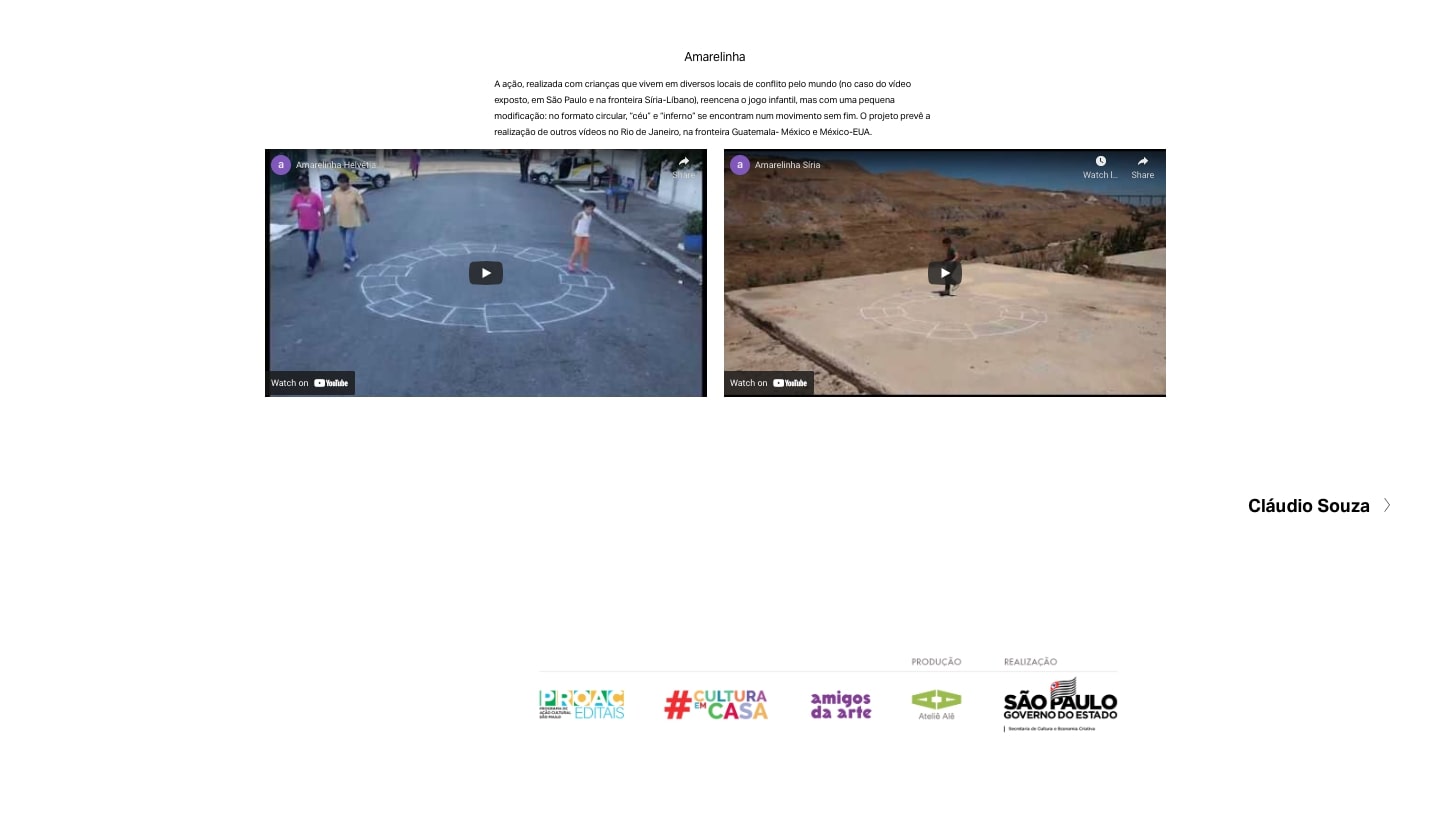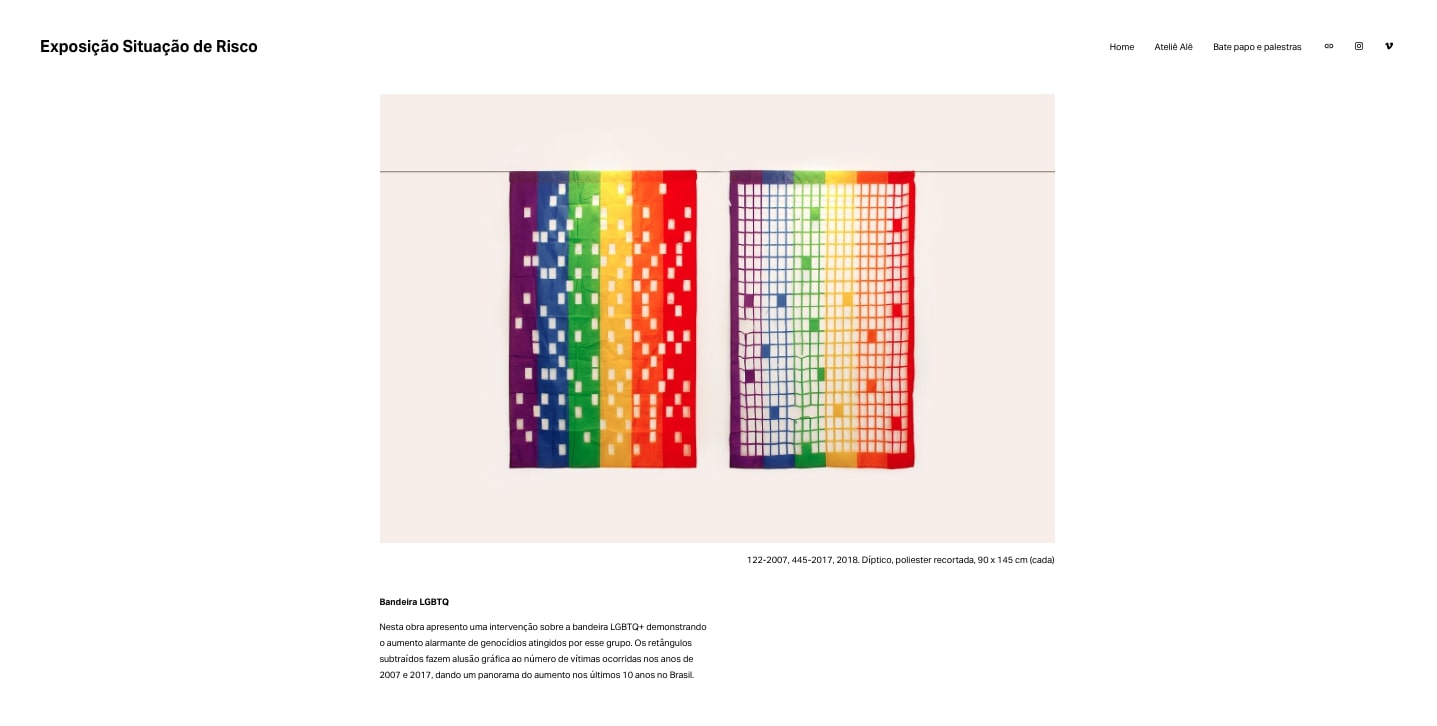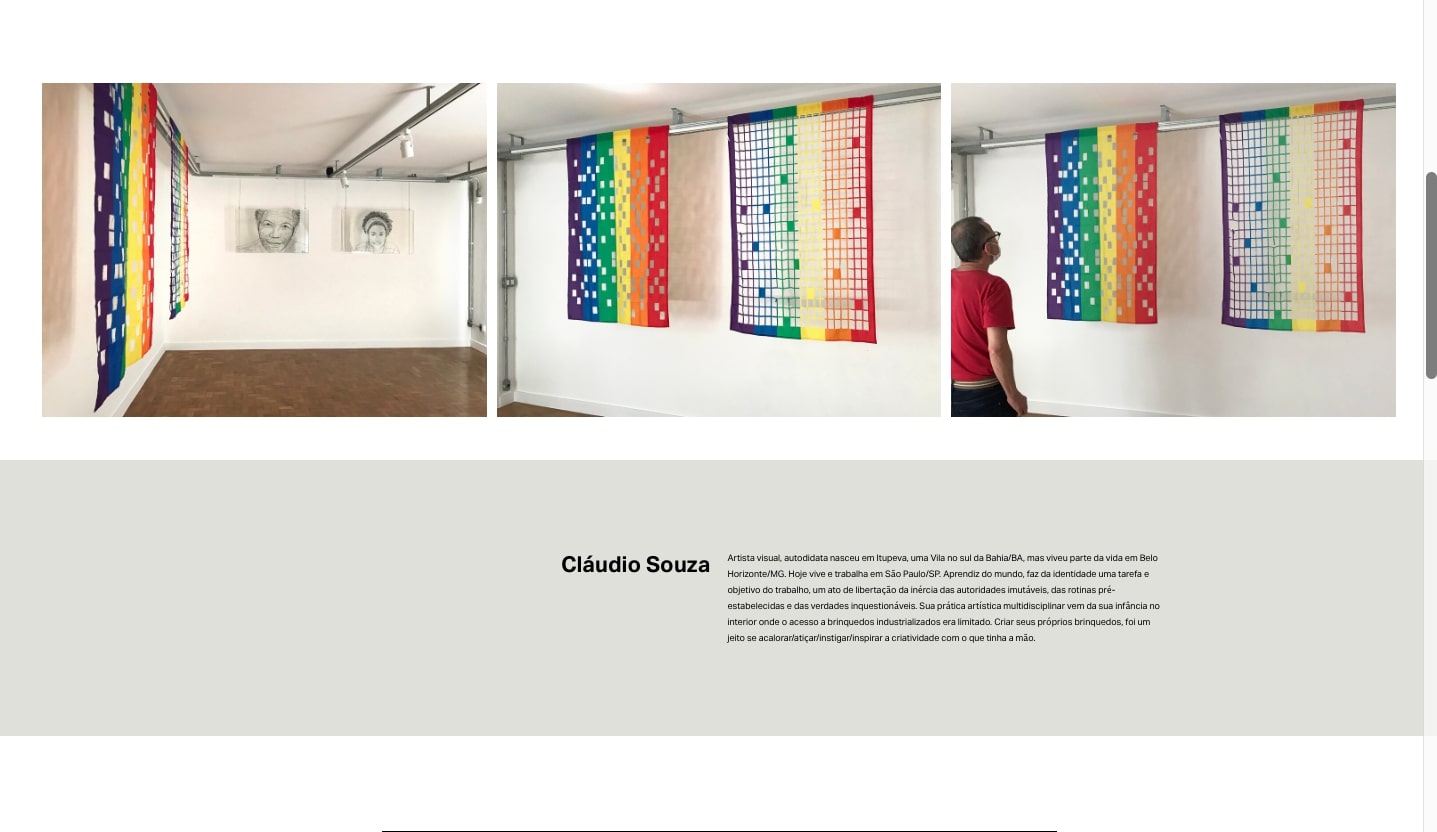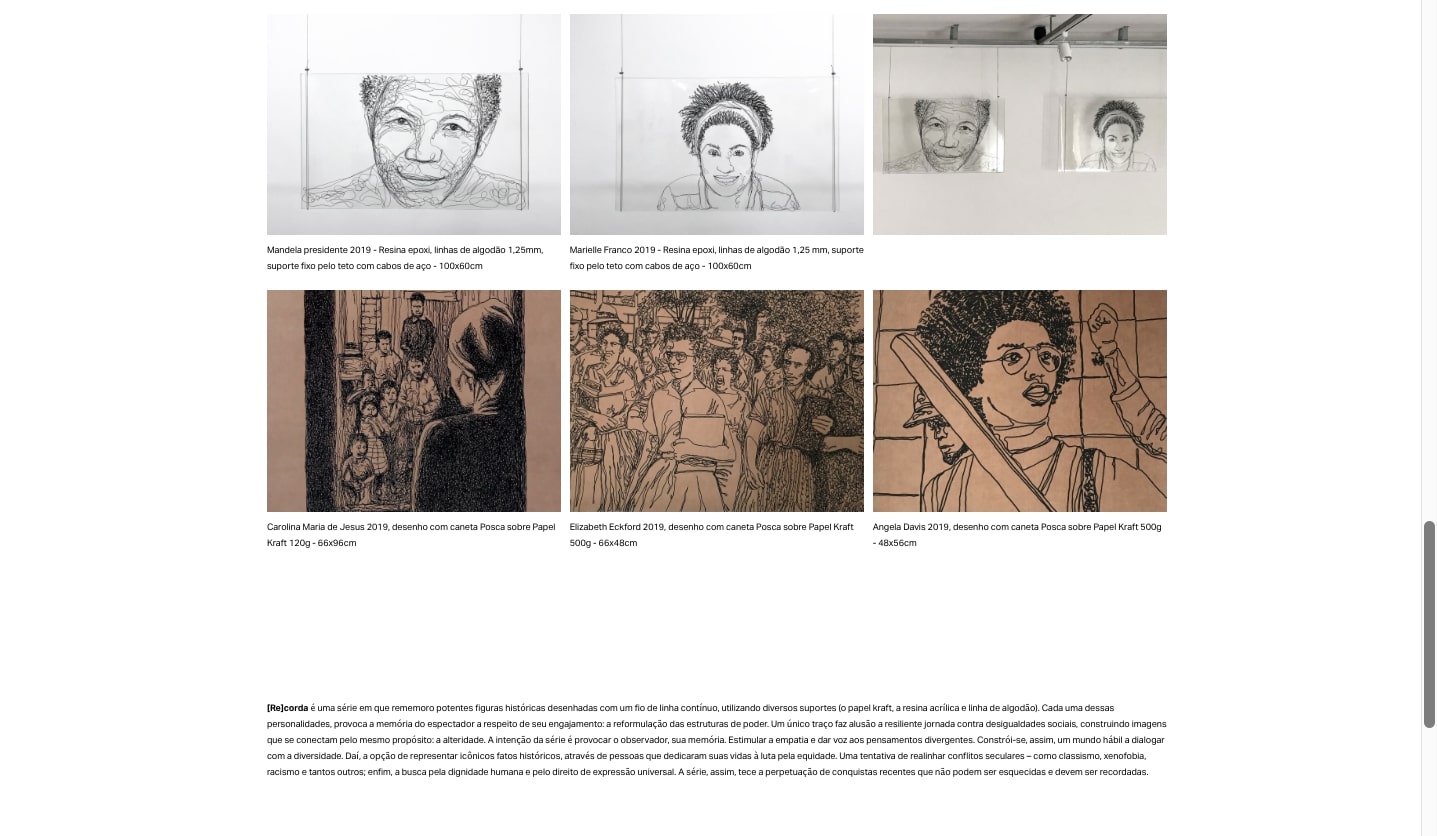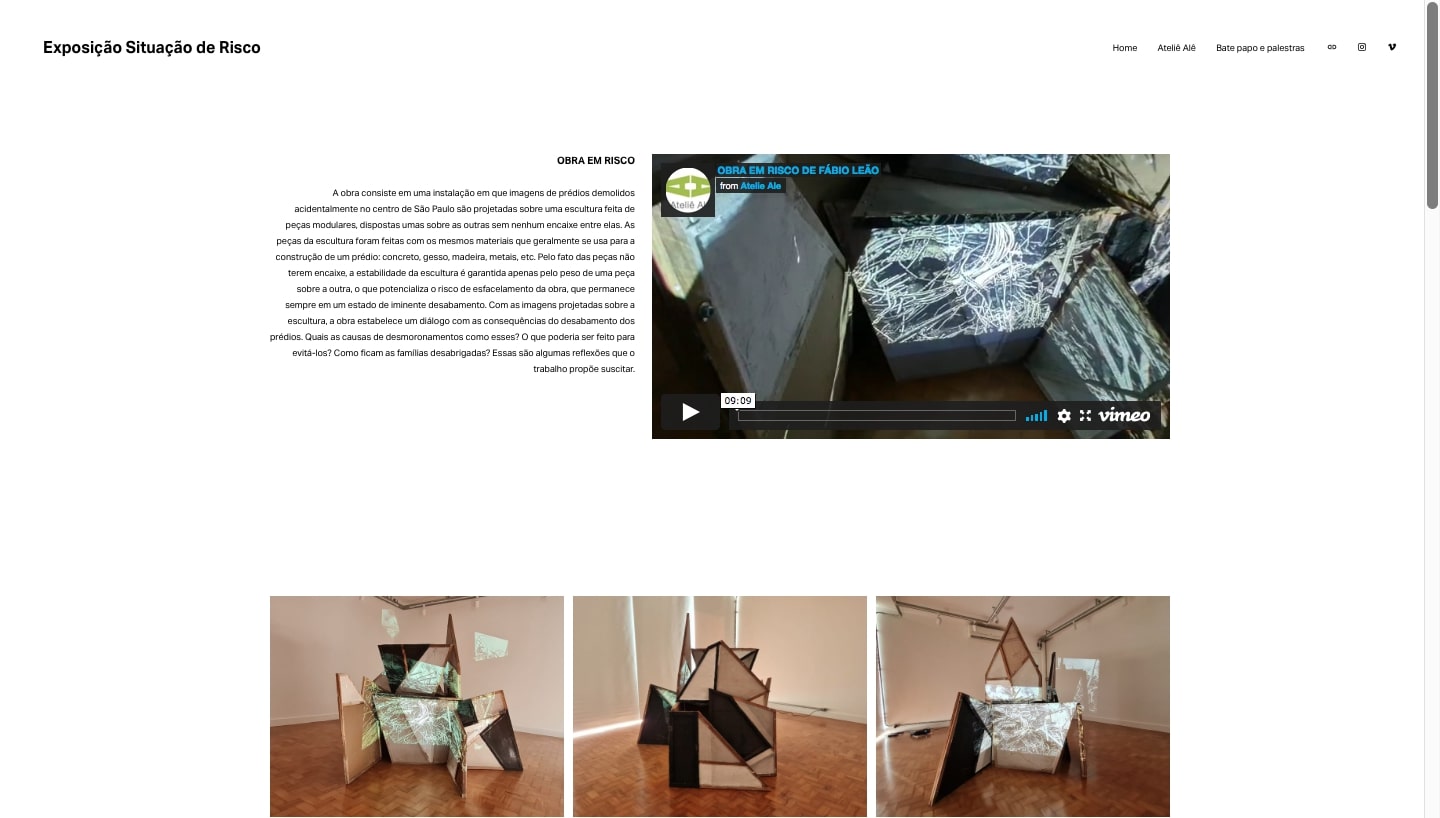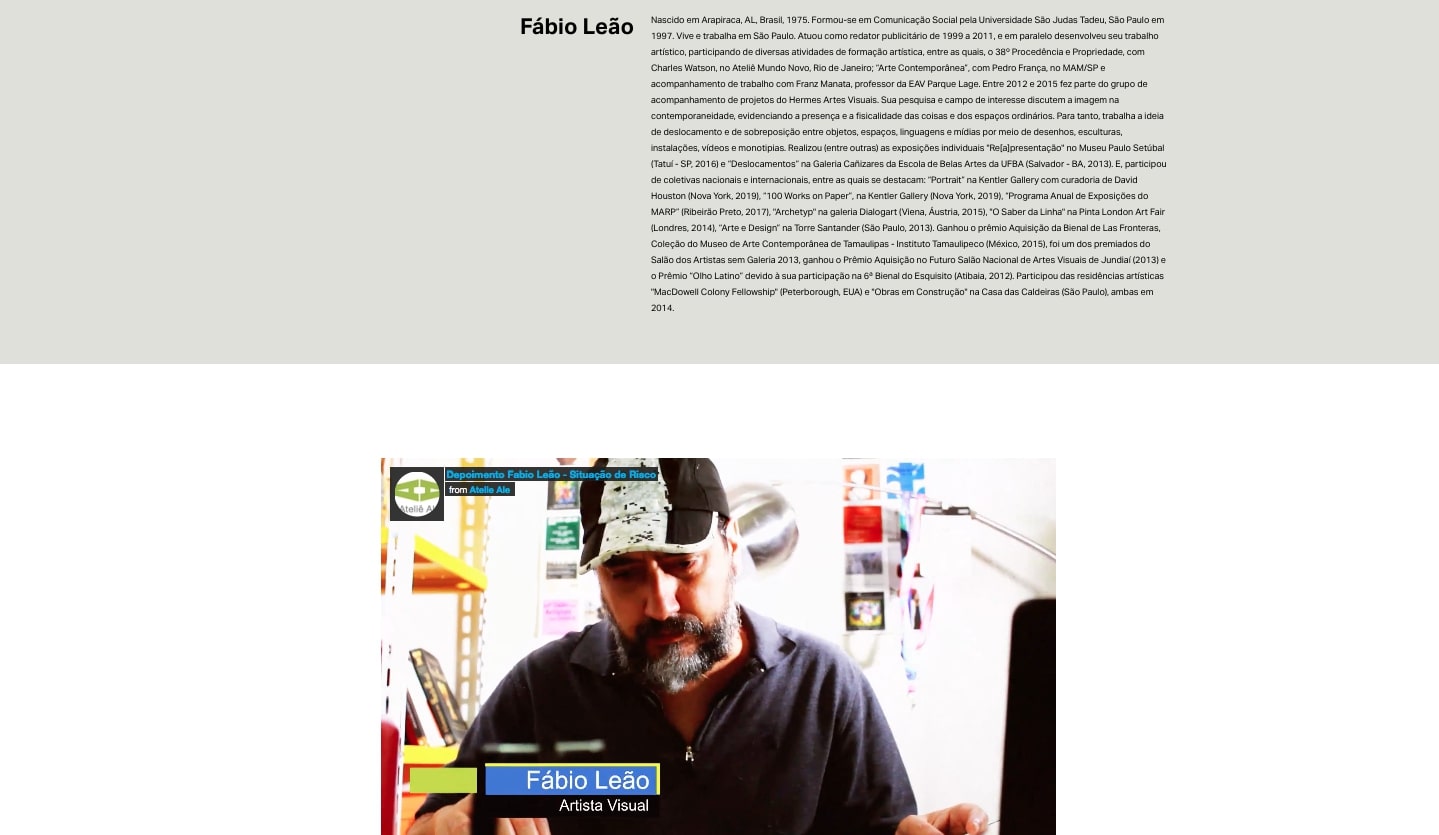


Situação de Risco [Risk Situation]
Andrey Gûaianã Zignnatto | Cláudio Souza | Fábio Leão | Leandro Tupan | Nathalie Böhm
Curatorship
Isabel Villalba
Exhibition period: from 10/01 to 12/10/2021
*Online exhibition of a project financed by PROAC
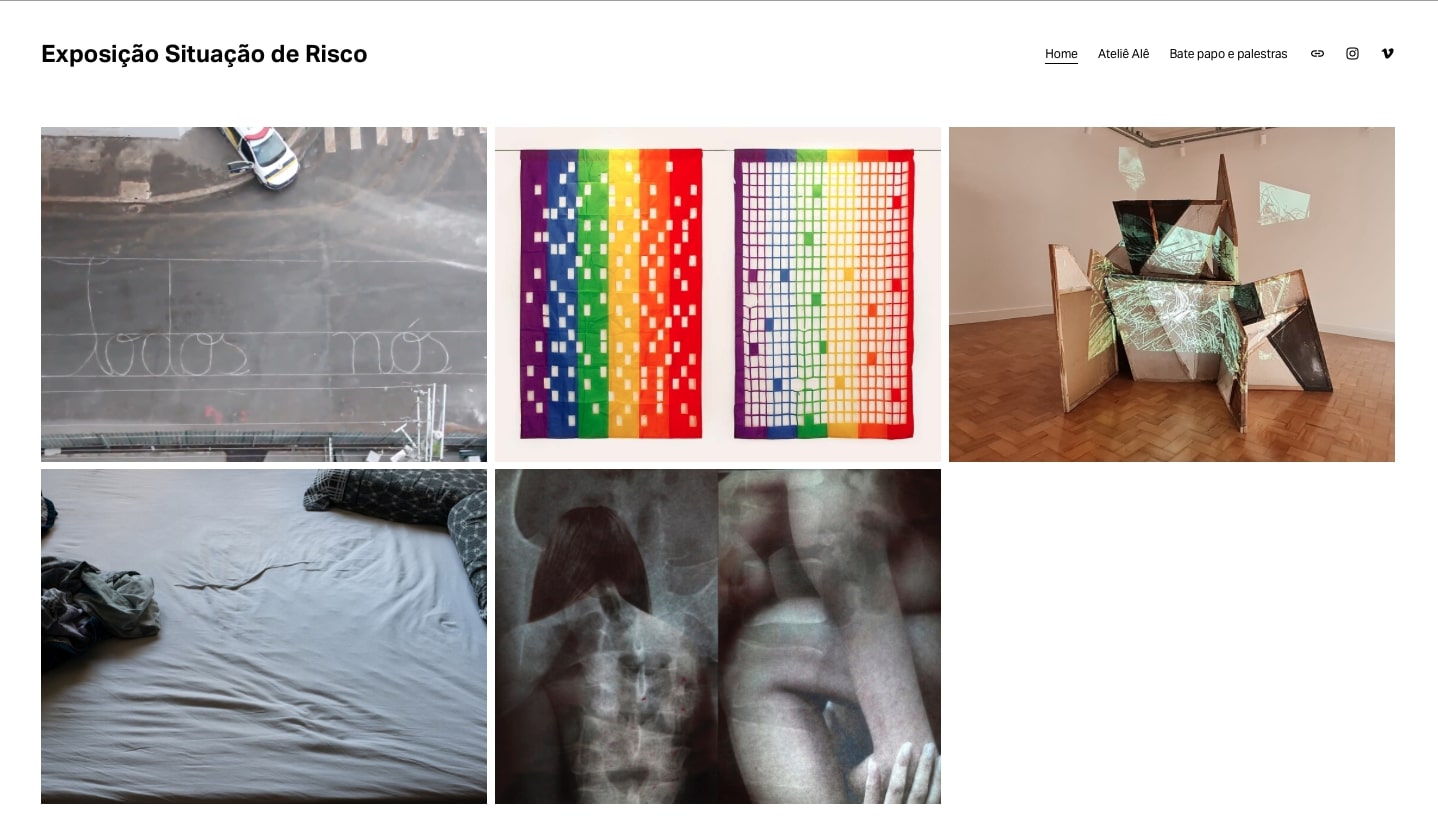
Paraphrasing the title of an old film “The Year We Live in Danger” (1982, Peter Weir), 2020-2021 are years in which the world as we knew it turned into chaos due to the Covid-19 pandemic leaving its trail of death, uncertainty and fear. In this adverse time that obliges many people to take a break from everyday life, an unwanted but essential break also offers the possibility of reflecting on some other situations of danger and vulnerabilities that plague the body of our society which, in the fleetingness of everyday life, day, we do not see in all its crudity. What do we see when we look? The invasion of information that we are exposed to at every moment manages to anesthetize, most of the time, the possibility of provoking any transforming action in us and necessary for the basic well-being of people.
The works of artists Andrey Gûaianã Zignnatto, Claudio Souza, Fabio Leão, Leandro Tupan and Nathalie Böhm move from the individual to the social, revealing relationships between obscurities and invisibilities of our time, without falling into despair. Quite the contrary, they propose that we question together about being aware of the socio-political context in which we live, so as not to forget, and with that imagine a fairer, more solidary, more empathetic world. Complex task for the artist engaged with his time and surroundings.
Thus, Leandro Tupan, photographer and restorer, presents photographs from the “Somnium” series, produced during isolation during the pandemic. His research is related to the body, the sphere of intimacy, sexuality, affection; disturbing the viewer about what is evident in the frozen image: marks on the bed, the reverse side of an old picture frame, evoking the presence of an absence. Committed to collective work, he worked on the production of banners in the Corpo Vivo Posithivo * project, which aim to draw attention to HIV and to people living with the disease, who are still stigmatized today.
*Project created together with Gustavo Falqueiro, educator, photographer, researcher.
Nathalie Böhm, photographer, works with digital media creating images in superimposed layers, subtly appalling, about a problem that affects women all over the world, an epidemic, or should we say a pandemic? Violence against women, especially that which takes place in the intimacy of the home. Physical and/or psychological violence that gradually destroys self-esteem and hurts the body, in many cases reaching femicide.
Claudio Souza intervene in the flags of the LGBTQIA+ population, leaving visible voids that symbolize the absence of those who lost their lives out of aversion, hatred and irrational fear against those who manifest sexual orientation or gender identity different from heteronormative standards. In another work, the drawings of Nelson Mandela and Marielle Franco, important references in the fight against racism and prejudice, are made with black wool fixed with transparent resin. Topics of great relevance for the artist who does not hide his concern and questions so that we do not forget to get answers to the questions that echo in the ears of anyone who proposes to listen.
Andrey Gûaianã Zignnatto presents videos with some of the themes that are part of his research: children in territories of war, and chemical dependence on drugs, bringing to light the reflection on the possible relationship between the urban environment and the citizen. In “Todos Nós”, the artist moves through space producing actions that involve the bodies of others and his own, using the street as an open notebook, ready to be written by its inhabitants, however the action is erased by the truck that sweeps the city. On the street, isn’t there room for all of us?
Fábio Leão’s works in video and installation respond to an investigation into the constructions of homeless people who generally live in precarious shacks, often improvised with materials found in the surroundings. Leão also pays attention to the collapse of buildings in the city.
The fragility of the buildings caused tragedies, death and abandonment. Does the place that should be a shelter and a home show us the fragility of the social body? Other questions that arise here are about the fate of people who become homeless. Where do they go? Are they welcome, or invisible?
Returning to Zignnatto’s videos, we watch the classic hopscotch game, played by children from various parts of the world: borders of Syria and Lebanon, Venezuela and Brazil, Angola, Cuba and vulnerable children in Cracolândia in São Paulo. Borders are diluted in the childhood game, just as art opens up possibilities for aesthetic solutions that can deal with the ills and joys of life in society.
It is necessary to have hope, but to have hope from the verb to hope; because there are people who have hope of the verb to wait. And hope from the verb to wait is not hope, it is waiting. Hoping is getting up, hoping is going after it, hoping is building, hoping is not giving up! To hope is to move forward, to hope is to join with others to do otherwise… “(FREIRE, 1992, apud CABRAL, 2015, s.p.).
The Situação de Risco exhibition is Ateliê Alê’s first online exhibition, held with resources from PROAC (São Paulo Cultural Action Program). Despite being a challenge for everyone involved, it is also an incentive for more people to approach the social issues addressed in this exhibition. Even if in the virtual environment there is no direct clash between the spectator and works as in a gallery, this new time, delimited by the pandemic, requires an adaptation to take advantage of existing technological devices in order to reach a broader public interested in art.
Isabel Villalba
Curator
